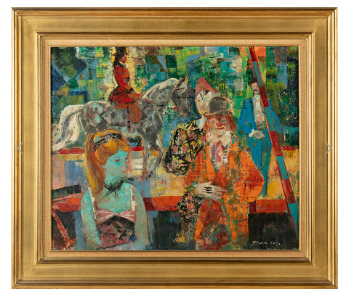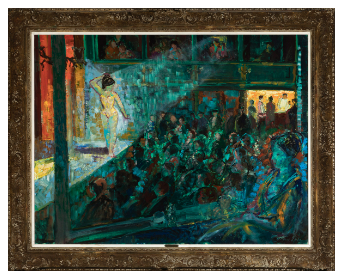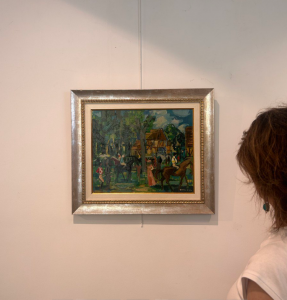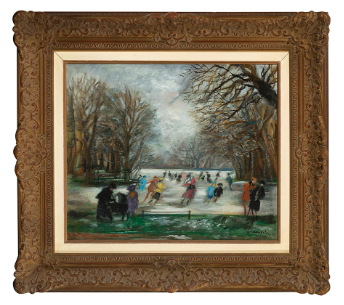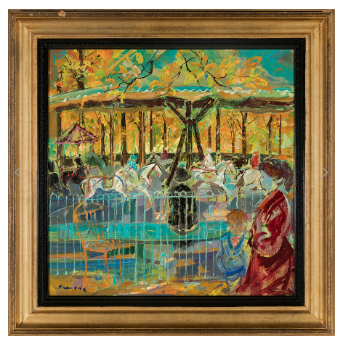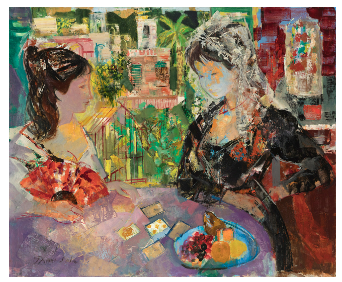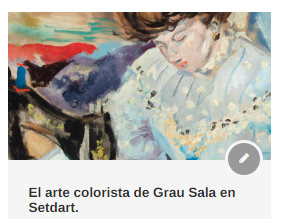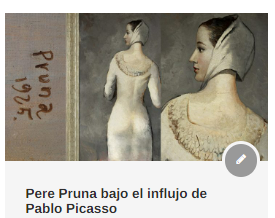Grau Sala: the artist who did not want to succumb to the avant-gardes
Auction day April 23
From the end of the 19th century, Paris became the favorite destination of a long line of Catalan artists who, from Casas and Rusiñol to Miró and Clavé through Nonell and Casagemas, found in the French capital the fertile ground for an artistic revolution that began with the Impressionists and culminated with the avant-garde.
In this regard, the upheaval of the civil war in Spain precipitated the beginning of a new migratory stage, in which Paris would become the main destination for a large number of artists who supported the Republican side. Thanks to the unifying character that in terms of intellectuality and artistic creation defined the Parisian cultural scene since the mid-nineteenth century, the city received a flood of creators from all over Europe, who, attracted by the unparalleled artistic development led by the avant-garde, fulfilled their desire to abandon the artistic practices of a fin-de-siècle society anchored in the past. The isms that followed one another at a dizzying pace made Paris the dream of any artist, with the highest number of creators per square meter in the world.
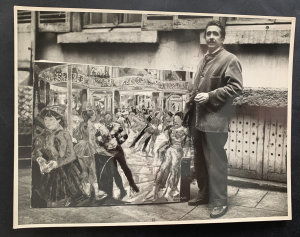
From this confluence of exiled artists who, under the banner of absolute aesthetic freedom, settled in Paris during the period between 1900 and 1940, the so-called Paris school was born, whose name, coined for the first time in 1925 by art critic André Warnod, rather than designating a hegemonic artistic current, refers to the leading position that the city attained as the world capital of Western art.
Among the many Spanish artists whose activity is framed in the school of Paris, Emili Grau Sala is a particularly unique case. Far from succumbing to the hegemonic dominance of the avant-garde, Grau Sala refused to ascribe to any of the isms that ruled the international art scene at the time. During the 25 years he remained in Paris, since his move to the Montparnasse district in 1936, he never renounced his style, defending to the last consequences his fidelity to a colorist figuration that soon made him known as the successor of the Impressionist spirit and values.
In this sense, the works under bidding manifest the vision and vital attitude under which Grau Sala gave form and life to his art. Unlike many of his contemporaries who, like him, lived in the midst of the war, Grau Sala never aspired to be a chronicler of his time. In fact, in the face of the horror of a tumultuous historical context, the Catalan-born artist constructed an authentic hymn to life in which idle, everyday scenes become a true refuge in which there is still room for hope.
Through his paintings imbued with an unconditional hedonism of gentle and poetic naturalism in the wake of his admired Bonnard, Édouard Vuillard and Duffy, Grau Sala seems to want to escape from reality, recreating with a certain nostalgia a past and happy time, where life could still be a journey of joy. With an agile brushstroke and an intense and vibrant chromatism that dispenses with the limits imposed by drawing to give body to the forms, the artist demonstrated an excellent ability to recreate the elegant and lively atmosphere of scenarios that, such as racetracks, theatrical performances or domestic interiors, made up the artist’s most outstanding creative corpus. The delicacy, grace and finesse that emerges from them, places Grau Sala in the orbit of a decorative painting that with the French post-impressionism raised its plastic values to its maximum expression.
In his obstinate purpose of constructing a reality antithetical to historical events, the artist offers us a creative universe that we could well extract from some of the passages that Proust narrates in his masterpiece “In Search of Lost Time” of which Grau Sala would end up making an illustrated edition.
Neither the Spanish Civil War that sent him into exile, nor World War II, nor Nazi-occupied France, nor Franco’s regime, nor the division of the world into two irreconcilable halves could obscure the work of an artist who never ceased in his efforts to achieve an ideal based on the harmonious and lyrical capture of beauty, reminding us that the most human and beautiful side of life can also be born and grow in the darkest times.

